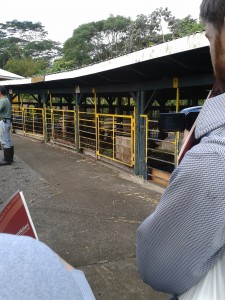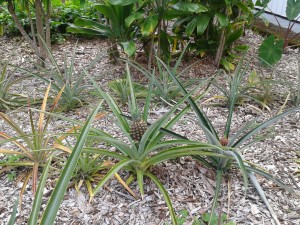Ke Kula Mauli Ola Hawaiʻi ʻO Nāwahīokalaniʻōpuʻu, or Living Hawaiian Life-Force School, is located in Keaʻau, Hawaiʻi. Elise McClay and Carol Little had the opportunity to tour this school on March 4th. The school is like any other school you would find in the United States, except that all courses are taught in the Hawaiian language. Oh, and not to forget that in the school playground are pineapple gardens and pigpens. This school teaches their students all subjects from Math to Social Studies to History to Japanese using the Hawaiian language. English, which is introduced in the 6th grade, is taught in English, however.
The school opened its doors in the 1980s. At this time, there were only a handful of speakers of the Hawaiian language and only about 45 under the age of 18. The Hawaiian language was falling into near extinction. Dedicated and devoted teachers promoted the usage of the Hawaiian language at this school. Now, there are around 300 students who matriculate there, many students having attended since kindergarten or pre-school. Throughout the hallways, students of all ages can be heard chattering in Hawaiian. The classrooms are full of posters and pictures with Hawaiian text. Some students of Nawahi now use Hawaiian at home as their primary language, after having learned it at school. Many students say they will raise their children in this language and hope that their children can also attend a Hawaiian language immersion school.
It was truly an enlightening and empowering experience to see such a successful language revitalization program. This does not happen over night, though. Many of the teachers have been there from the beginning and can attest to the many hardships they encountered and overcome which ultimately led to its success.

School Grounds at Nawahi Hawaiian language immersion school where students learn to tend to plants, many times using Hawaiian practices.

Students not only learn subjects like math and history but also how to take care of pigs and plants.

Pineapple plants growing on the school grounds at the Nawahi school.



